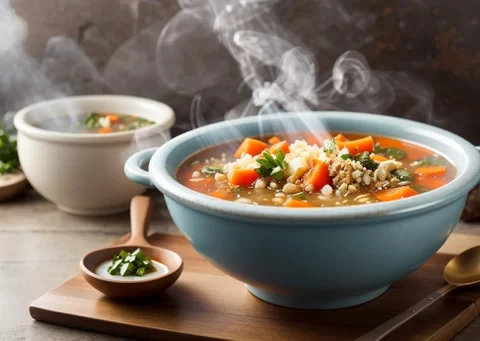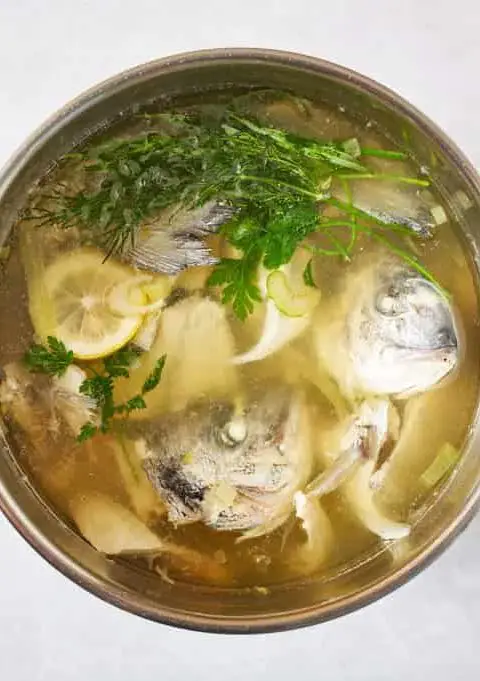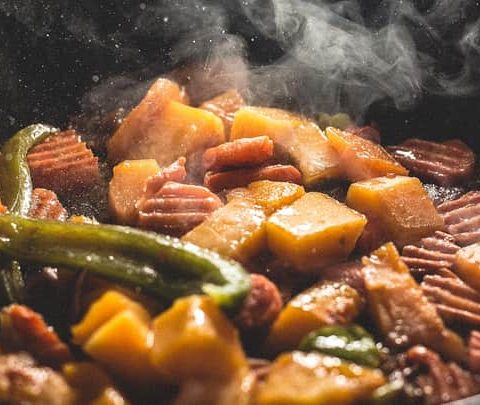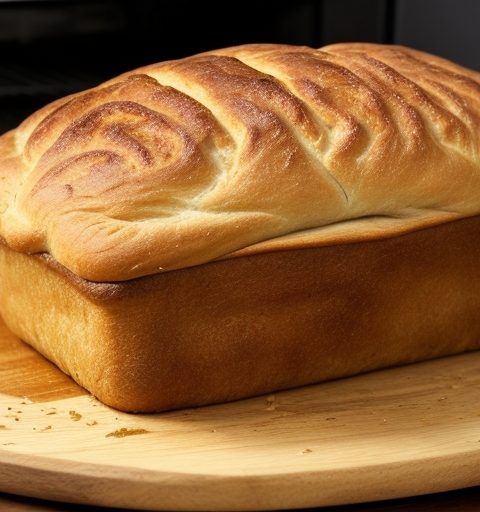You want to know how to make creamy soups without dairy or gluten, right? Well, you’ve come to the right place.
In this article, I’ll show you some of the best ways to create delicious and satisfying soups that are dairy-free and gluten-free, using simple and healthy ingredients.
Whether you’re vegan, lactose intolerant, or just looking for a lighter option, these soups will warm you up and fill you up without compromising on flavor or texture.
Let’s get started!
What Makes a Soup Creamy?
When we think of creamy soups, we usually imagine soups that are made with heavy cream, milk, cheese, or butter. These ingredients add richness, smoothness, and thickness to the soup, making it more satisfying and comforting. However, they also add a lot of calories, fat, and cholesterol, which may not be ideal for everyone. Plus, some people may have allergies or intolerances to dairy products, or follow a vegan or gluten-free diet that excludes them.
So, how can we make soups creamy without dairy or gluten?
The answer is simple: we can use plant-based alternatives that mimic the properties of dairy products, such as nuts, seeds, legumes, coconut milk, and pureed vegetables.
These ingredients can add body, creaminess, and flavor to the soup, while also providing nutrients, fiber, and protein. They’re also more versatile and adaptable than dairy products, as they can suit different cuisines and preferences.
How to Make Creamy Soups Without Dairy or Gluten: 7 Easy Methods
There are many ways to make creamy soups without dairy or gluten, depending on what kind of soup you want to make and what ingredients you have on hand. Here are some of the most common and easy methods that you can try:
1. Use Nuts or Nut Butters
Nuts are a great way to add creaminess and nuttiness to your soups. You can use any kind of nuts that you like, such as almonds, cashews, walnuts, pecans, pistachios, or macadamia nuts. You can either soak them in water for a few hours or overnight to soften them, then blend them with some water or broth until smooth. Or you can use nut butters, such as peanut butter, almond butter, cashew butter, or tahini (sesame seed paste), which are already creamy and ready to use. Just add a few tablespoons of nut butter to your soup and whisk well to combine.
Some examples of soups that use nuts or nut butters are:
- Vegan Cream of Mushroom Soup, which uses walnuts to create a luscious texture and earthy flavor.
- Vegan Pumpkin Soup, which uses cashews to add richness and sweetness to the soup.
- Sweet Potato Peanut Bisque, which uses peanut butter to give the soup a savory and spicy kick.
2. Use Lentils or Legumes
Lentils and legumes are another great way to make your soups creamy without dairy or gluten. They’re high in protein, fiber, iron, folate, and potassium, making them very nutritious and filling. Plus, they’re cheap and easy to cook. You can use any kind of lentils or legumes that you like, such as red lentils, green lentils, black beans, chickpeas, white beans, or split peas. You can either cook them separately and then puree them with some water or broth until smooth. Or you can add them directly to your soup and blend them in at the end.
Some examples of soups that use lentils or legumes are:
- Egyptian Lentil Soup, which blends red lentils with vegetables and spices for a satisfying and cozy soup.
- Creamy Dairy-free Sausage and Potato Soup, which uses white beans to make the soup thick and hearty.
- Curried Coconut Carrot Soup, which uses chickpeas to add protein and creaminess to the soup.

3. Use Coconut Milk
Coconut milk is one of the most popular substitutes for heavy cream in many soups, stews, and curries1. It’s rich, creamy, and flavorful, and it works well with both sweet and savory ingredients. It’s also vegan, gluten-free, and lactose-free, making it suitable for most diets. You can use either canned coconut milk or carton coconut milk, depending on how thick and rich you want your soup to be. Canned coconut milk is usually more concentrated and higher in fat, while carton coconut milk is more diluted and lower in fat. You can either use coconut milk as the main liquid base for your soup, or add it at the end as a finishing touch.
4. Use Pureed Vegetables
One of the simplest ways to make your soups creamy without dairy or gluten is to puree the vegetables that are in it. That way, you don’t need to add any extra ingredients, and you can use up any leftover or wilted veggies that you have in your fridge. Plus, you’ll get more vitamins, minerals, and antioxidants from the veggies, making your soup healthier and more colorful.
Some of the best vegetables to puree soups are:
Cauliflower:
Cauliflower is a versatile and mild-tasting vegetable that can be blended smoothly to achieve a creamy, almost buttery texture. It’s also low in calories and carbs, making it ideal for keto and low-carb diets. You can use cauliflower as the main ingredient for your soup, or add it to other soups to thicken them up.
Potatoes:
Potatoes are a classic ingredient for creamy soups, as they add starchiness and body to the soup. They’re also cheap and filling, and they can pair well with many other ingredients. You can use any kind of potatoes that you like, such as russet, Yukon gold, red, or sweet potatoes. You can either peel them or leave the skin on for extra fiber.
Carrots:
Carrots are a sweet and crunchy vegetable that can add color and flavor to your soups. They’re also high in beta-carotene, which is good for your eyesight and skin. You can use carrots as the main ingredient for your soup, or add them to other soups to enhance their sweetness.
Zucchini:
Zucchini is a light and refreshing vegetable that can add moisture and creaminess to your soups. It’s also low in calories and carbs, making it suitable for keto and low-carb diets. You can use zucchini as the main ingredient for your soup, or add it to other soups to lighten them up.
5. Use Oat Milk or Oat Cream
Oat milk is a plant-based milk that is made from oats and water. It’s creamy, nutty, and slightly sweet, making it a good alternative for dairy milk in many recipes. It’s also vegan, gluten-free (if using certified gluten-free oats), and nut-free, making it suitable for most allergies and intolerances. Oat milk can be used as the main liquid base for your soup, or added at the end as a finishing touch. You can either buy oat milk from the store, or make your own at home by blending oats with water and straining the mixture.
Oat cream is a thicker and richer version of oat milk that is made from oats, oil, and water. It’s similar to heavy cream in consistency and flavor, making it ideal for creamy soups. It’s also vegan, gluten-free (if using certified gluten-free oats), and nut-free, making it suitable for most allergies and intolerances. Oat cream can be used as a substitute for heavy cream in any soup recipe, or added at the end as a garnish. You can either buy oat cream from the store, or make your own at home by blending oats with oil and water.
Try these Amazing Coriander Soup
6. Use Rice Milk or Rice Cream
Rice milk is a plant-based milk that is made from rice and water. It’s thin, light, and mildly sweet, making it a good alternative for dairy milk in many recipes. It’s also vegan, gluten-free, and nut-free, making it suitable for most allergies and intolerances. Rice milk can be used as the main liquid base for your soup, or added at the end as a finishing touch. You can either buy rice milk from the store, or make your own at home by blending cooked rice with water and straining the mixture.
Rice cream is a thicker and richer version of rice milk that is made from rice, oil, and water. It’s similar to heavy cream in consistency and flavor, making it ideal for creamy soups. It’s also vegan, gluten-free, and nut-free, making it suitable for most allergies and intolerances. Rice cream can be used as a substitute for heavy cream in any soup recipe, or added at the end as a garnish. You can either buy rice cream from the store, or make your own at home by blending cooked rice with oil and water.
7. Use Silken Tofu
Silken tofu is a soft and smooth type of tofu that is made from soybeans and water. It’s high in protein, calcium, iron, and magnesium, making it very nutritious and filling. It’s also vegan, gluten-free, and dairy-free, making it suitable for most diets. Silken tofu can be blended easily to create a creamy and silky texture that can replace heavy cream in many soups. It’s also neutral in taste, so it can adapt to any flavor that you want to add to your soup.
Try these Amazing Mary Berry Soups Recipe
- Mary Berry Parsnip Soup
- Mary Berry Carrot and Parsnip Soup Recipe
- Mary Berry Carrot and Orange Soup
- Mary Berry Mushroom Soup
- Mary Berry Tomato and Basil Soup
- Mary Berry Vegetable Soup Recipe
FAQs
Here are some of the frequently asked questions about making creamy soups without dairy or gluten:
How can I make my soups thicker without dairy or gluten?
A: There are several ways to thicken your soups without dairy or gluten, such as using cornstarch, arrowroot powder, tapioca starch, potato starch, or xanthan gum as thickeners. You can also use pureed vegetables, nuts, seeds, lentils, legumes, or oats as natural thickeners.
How can I make my soups more flavorful without dairy or gluten?
A: There are many ways to add flavor to your soups without dairy or gluten, such as using herbs, spices, garlic, onion, ginger, lemon juice, vinegar, soy sauce, tamari sauce, nutritional yeast, miso paste, vegetable stock, or plant-based cheese as flavor enhancers.
How can I store my soups without dairy or gluten?
A: You can store your soups without dairy or gluten in an airtight container in the refrigerator for up to 4 days, or in the freezer for up to 3 months. Make sure to label and date your containers before storing them. To reheat your soups without dairy or gluten, you can either microwave them in a microwave-safe bowl for a few minutes, stirring occasionally; or simmer them in a pot over low-medium heat until hot.
How can I make my soups more filling without dairy or gluten?
A: You can make your soups more filling without dairy or gluten by adding more protein and fiber sources to them, such as tofu, tempeh, seitan, quinoa, rice, pasta, bread, crackers, or croutons. You can also serve your soups with a salad, a sandwich, or a wrap to make them more satisfying and balanced.
How can I make my soups more fun and creative without dairy or gluten?
A: You can make your soups more fun and creative without dairy or gluten by playing with different shapes, colors, and textures of your ingredients. For example, you can use a cookie cutter to cut out shapes from your bread or tofu and add them to your soup as toppings. You can also use a spiralizer to make noodles from your vegetables and add them to your soup as garnishes. You can also use a blender to make swirls or patterns from your different soups and serve them in a bowl or a glass.
Conclusion
As you can see, there are many ways to make creamy soups without dairy or gluten, using plant-based alternatives that are healthy, delicious, and easy to find. You can experiment with different ingredients and methods to create your own versions of creamy soups that suit your taste buds and dietary needs. Whether you’re looking for a cozy winter soup or a refreshing summer soup, you can always enjoy a creamy soup without dairy or gluten.








